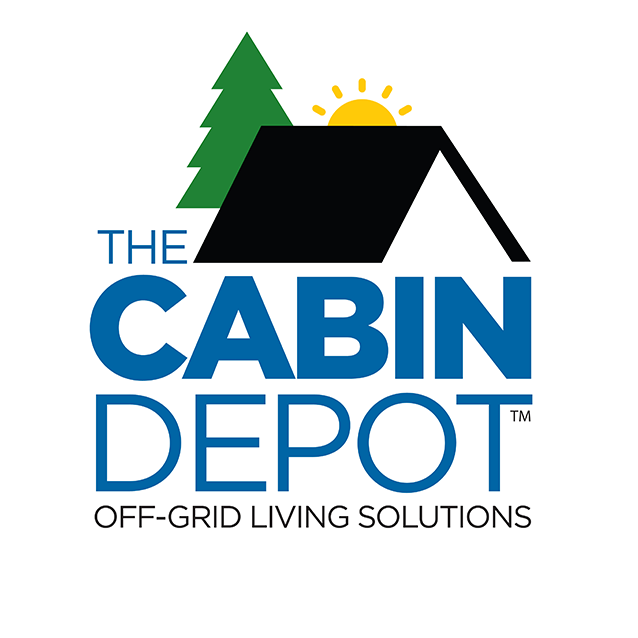The TCD Beginner’s Guide to Off-Grid Solar PowerUpdated 7 months ago
Solar power can be confusing...

So, we’ve prepared this guide to help answer the most common questions in very simple, non-technical, easy to understand language.
Introduction
The internet is filled with videos, blogs, pictures, recommendations and other information that’s often contrary or downright ridiculous. Online calculators are also common, meant to help you choose the right ‘package’ for you. But in most cases these calculators don’t take into account that every application is different, and the actual requirements are as unique as the individual.
At The Cabin Depot™, we work with customers & provide recommendations not just for solar energy products but their entire off-grid living experience. Making some minor changes to your lifestyle or choosing the right appliances, can have a significant impact to the size (and ultimately the cost) of your solar power system.
The first step is to understand what off-grid means, and the differences between off- grid and grid-tied solar power systems
Keep scrolling to learn more or, use the Chapter Selector on the top-left side of this article to jump to the section of your choice!
Off-Grid and Grid-Tied: What's the Difference?
 Off-Grid systems are completely independent of the grid. They use batteries to store excess energy that’s generated during the day and use it at night or when there’s less sunlight. They are often used in remote areas where there is no power grid, but more and more people are opting for Off-Grid systems to become self-sufficient and reduce their reliance on traditional utilities. These are the systems that The Cabin Depot™ specializes in.
Off-Grid systems are completely independent of the grid. They use batteries to store excess energy that’s generated during the day and use it at night or when there’s less sunlight. They are often used in remote areas where there is no power grid, but more and more people are opting for Off-Grid systems to become self-sufficient and reduce their reliance on traditional utilities. These are the systems that The Cabin Depot™ specializes in.
These systems require the approval of the power utility, site inspections, and certified electrical contractors to install. The Cabin Depot Ltd™ does not offer these systems today, but we can recommend companies in your area who would be happy to help.
If your application is for off-grid use - TERRIFIC!
Please read on…

Off-Grid Solar Power System Components
All off-grid solar power systems are made up of four key components:
- Solar panels - convert sunlight to DC (Direct Current) energy.
- Batteries - store the DC energy that is produced by the solar panels.
- Charge controller - ensures proper charging of the battery bank.
- Inverter - converts DC energy to household 120/240vAC (Alternating Current) power.

People get very excited over solar panels, often rushing out to buy them first before properly sizing their system. Solar panels purchased because they are ‘on sale’ may seem like a bargain at the time, but if they aren’t the right type or size, they can actually cost you more money when finally installed.
The reality is, your batteries are the most important component of an off-grid power system!
The size and type of these components will depend primarily on the electrical loads that you want to service. This can be confusing as the jargon can become more technical, but here’s the bottom line:
To significantly reduce the size (and cost) of a solar power system, you will want to avoid (when possible) powering any appliances or devices used for heating or cooling air, water, and food electrically

Electrical Loads
Electrical loads are all the things that you will have “plugged in” to power electrically.
When it comes to solar power equipment selection, you must consider your electrical loads first. Your total investment will be much lower if the system is used to power small loads because you won’t require as much energy. You can still power large loads using solar, but your system components will need to be larger in order to store the additional energy required.
There is a direct correlation between your overall loads and your system cost.
Reducing Electrical Loads
You will need to balance convenience with practicality. For example, it would be nice to have an air conditioner at the cabin, or to run the AC in your RV, but the cost of a solar power system to run one will add many thousands of dollars to a system cost. So, thinking specifically of ways to reduce cost, here are some examples:
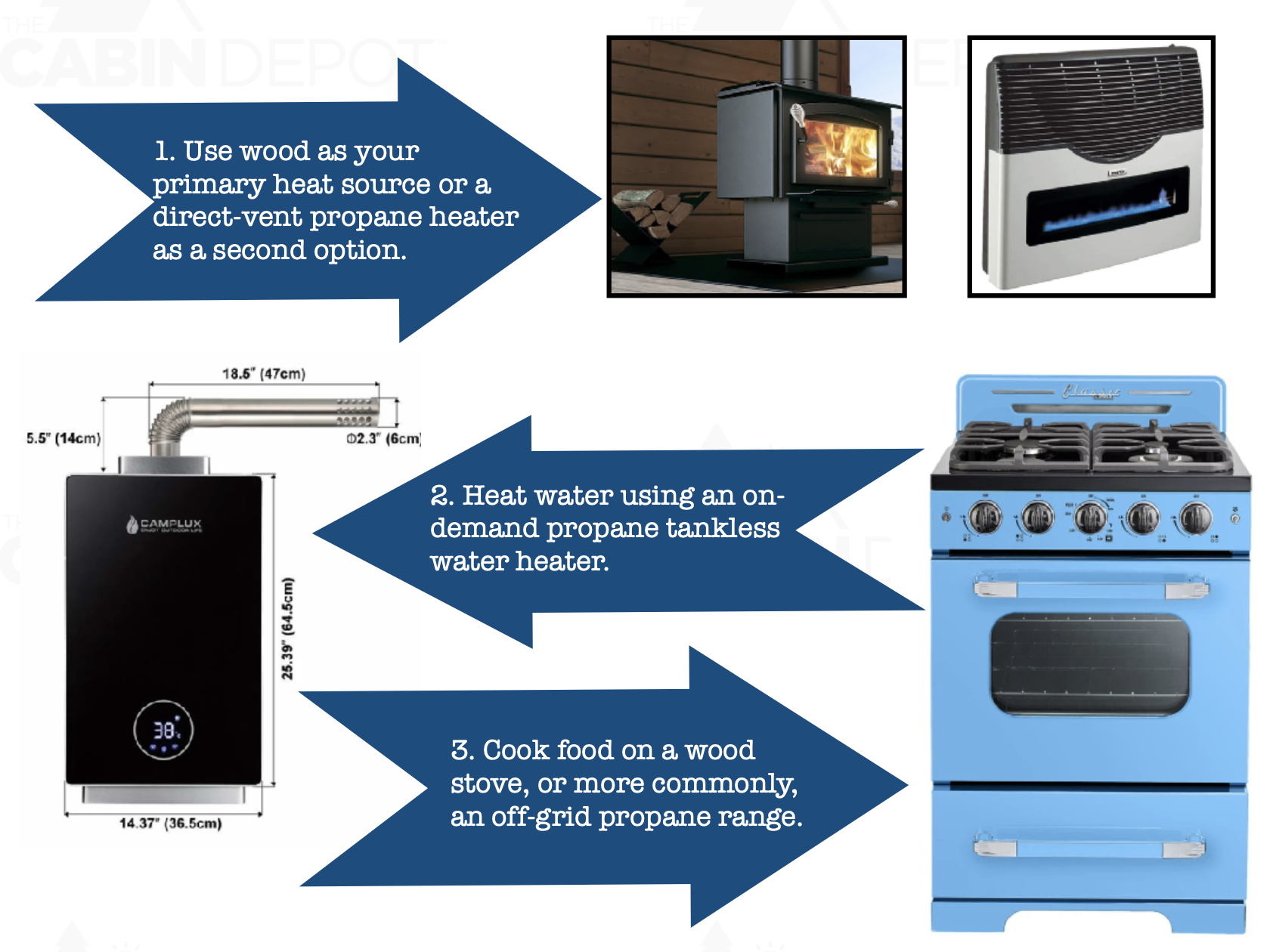
Refrigeration is usually the largest consumer of power in an off-grid application. A typical household refrigerator uses 120vAC to operate. They usually have auto-defrost, ice makers, and other accessories that ramp up energy consumption. Even a basic120vAC refrigerator will be rated for around 250 watts operating, with a surge (when the compressor starts) approaching 1000 watts.
Furthermore, in an off-grid application, you would be using DC power from your batteries and converting that to AC power via an inverter to run your refrigerator. Inverters suffer from conversion loss (when taking battery DC power and converting to household AC power), so you can count on ‘wasting’ anywhere from 5% to 15% of your energy through this conversion. As such, customers wanting to run an AC refrigerator will need to invest in a larger solar power system to operate it, which typically costs more than replacing the refrigerator with a solar/DC model designed for off-grid use in the first place.
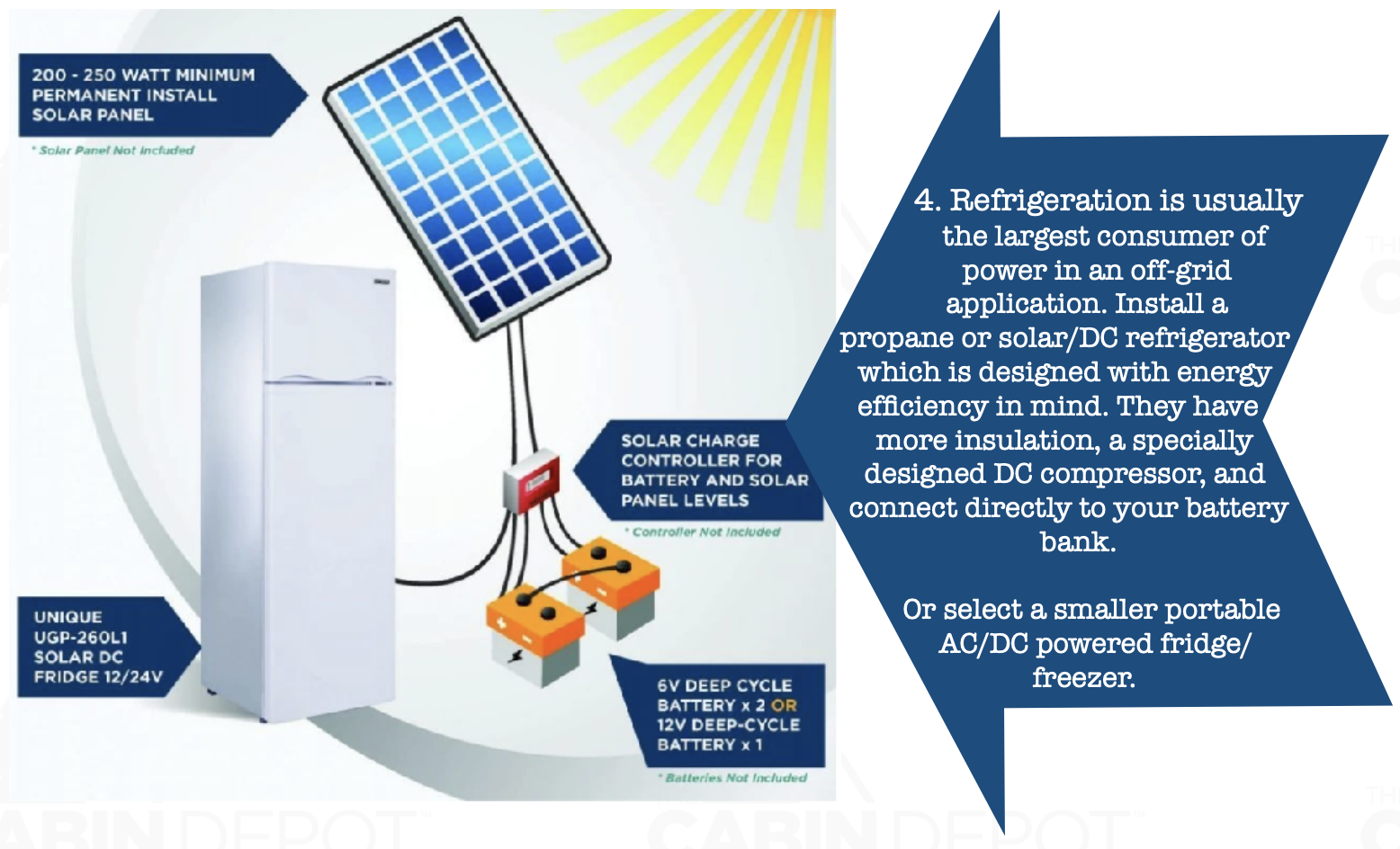
A DC refrigerator is designed with energy efficiency in mind. They have more insulation, a specially designed DC compressor, and connect directly to your battery bank. Since there’s no inverter required, there’s no conversion loss to worry about. There are many models of solar/DC refrigerator, but most are rated for around 55 - 65 watts when operating. This means you’re able to get away with using a much smaller solar power system to operate one.
Unique Off-Grid Appliances have some stylish classic retro colour options. Sunstar refrigerators, however, are the most efficient off-grid refrigerators and freezers we've seen, by far. Sunstar Solar Appliances use dedicated DC compressors for each fridge/freezer cabinet, 4" thick insulation and are 100% made in America.
How much solar power do I need for a 1700 sq.ft cabin?

The size of your solar system is entirely dependent on your electrical load. In other words, to find out what size off grid solar system you need, you need to find out your estimated daily watt/hour consumption. This can be done simply by multiplying the amount of watts that an appliance is rated for (this can be found on the back/bottom of the devices, or look for a tag with electrical info.) and multiply that number by the estimated hours of use in a day. Repeat that process for each appliance that you know you’ll be using with your solar system, tally up the watt hours for each appliance and viola, you have your daily watt hour consumption.
Volts + Amps = Watts
Amps / Watts = Volts
Volts / Watts = Amps
There are useful tools online for calculating your watt hour consumption, such as this calculator that provides the most common types of appliances with an estimated power rating for each - just in case you don’t feel like pulling out all the tags of your appliances. In most cases, and for better accuracy, this info can be found online by searching “Appliance name here watt rating”.
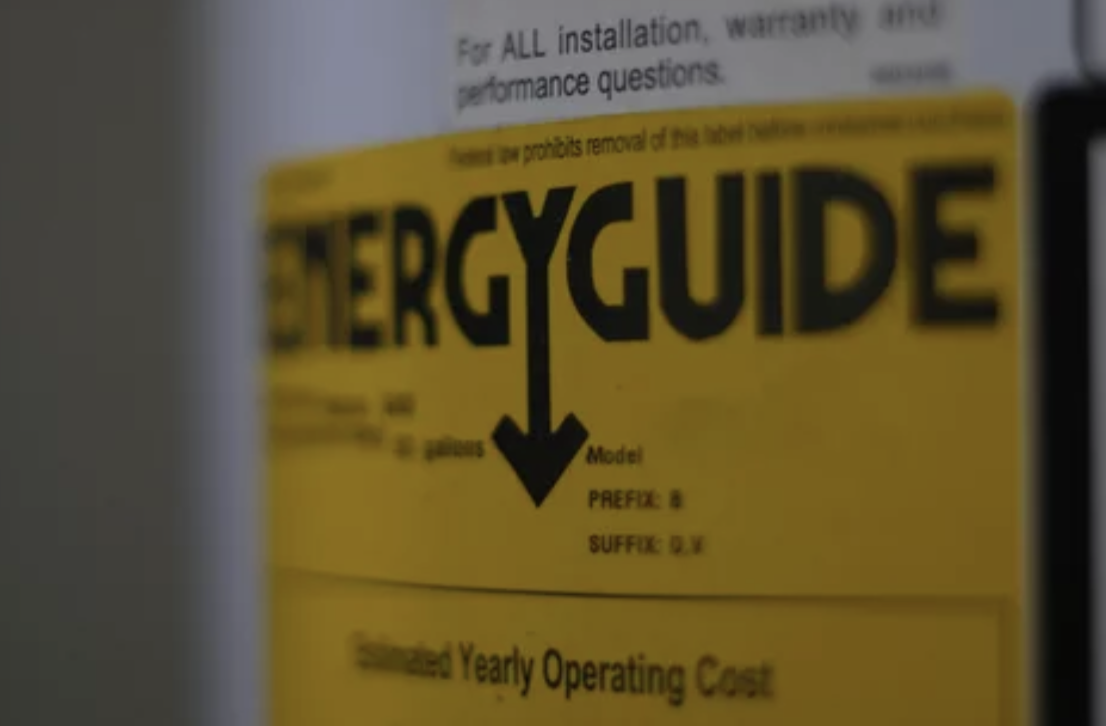
It is also important to note that the requirements listed on the appliance tag generally reflects the maximum energy requirements of that appliance. Typically, you’re not using that appliance at maximum wattage for the entire time you’re using it, so you’re overcompensating to give your solar system better performance on cloudy days where energy production is low.
Estimated Solar Power System Cost
Just like buying a car, your budget and lifestyle will determine how much money you will eventually spend on a solar power system. And just like buying a car, there are many options and accessories available. If you want more bells & whistles, or more convenience, you’ll spend more money. It’s that simple.
Purchasing your solar power system for full-time or part-time use is no small investment; informing yourself before purchasing is very important. Luckily, you've come to the right place, The Cabin Depot™ has been in the business for over 10 years and helped over 20,000 people go off-grid!
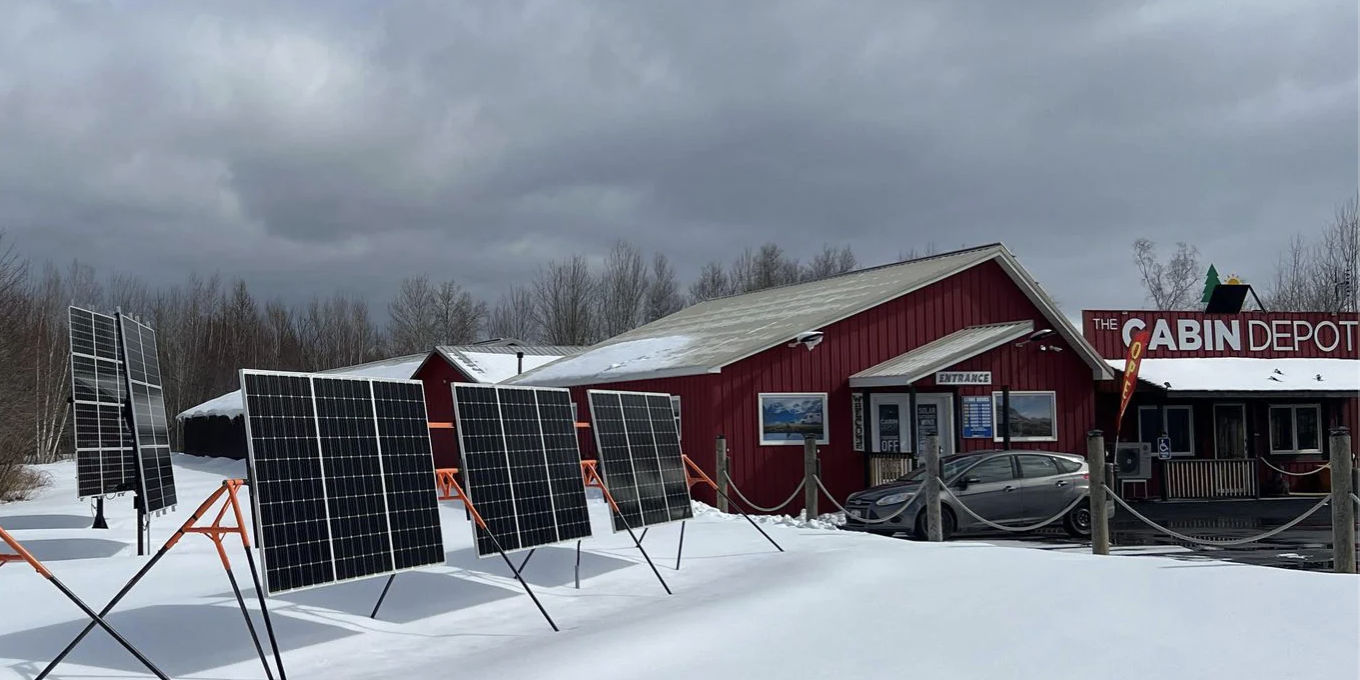
Below are some general examples which demonstrate the typical differences in cost:
Small system:
- Uses 12vDC battery power only (no inverter required).
- All electrical loads connect directly to the battery
- Can operate 12v LED lights, water pumps, 12v ceiling fans, 12v Solar Refrigerators.
- Typically used for hunting camps, weekend-use cabins, RVs, boats, yurts, vans.
- A small inverter could be added to run a TV or radio for a few hours at a time,
- Approximate cost: $350-$2000 for a complete setup.
Medium system:
- May use a 12vDC (or 24vDC battery bank with the use of a step-down converter) to power the same 12vDC devices listed in the ‘small system’ above, but adding a small inverter to supply 120vAC power for small AC loads such as radios, TV’s, DVD players, cell phone chargers, CPAP machines, etc.
- Typically used in seasonal cottages, camps, or cabins where you may spend weeks at.
- Can operate solar/DC refrigerators and other appliances designed for off-grid.
- Will typically use agas or propane generator to run larger load items as needed i.e. coffee maker, hair dryer, air conditioner, This is usually more cost-efficient vs increasing your solar system size to run these items for short periods of time. If you don’t want to use a generator, you can expect to add ~$1000+ to the system cost.
- Approximate cost: $1000-$3500 for a complete setup.
Large system:
- Uses 120vAC and/or 240vAC
- Uses 12vDC battery power only (no inverter required)
- Typically operates household electrical loads year-round
- Some exceptions, such as electric baseboard heat, electric ranges, or electric clothes washers are usually replaced with propane models.
- Northern climate off-grid houses will always have a backup gas or propane generator, used occasionally in the winter months to charge the battery bank after consecutive days of poor weather
- Approximate cost: $7500 (with careful energy management) to $25,000+ for a complete setup.
Disclaimer:
The Cabin Depot Ltd. is a retail business exclusively and accepts no liability for DIY installations or equipment selection. It is the customer’s responsibility to read all product manuals and installation instructions carefully, ensure all local & national building codes are met, and contact a qualified installer or tradesperson as required.
It’s important at this point to remind you again that every solar power system is as unique as the individual using it. Buying a “kit” that is too small or not expandable will leave you without power when you need it the most and limit your ability to expand. Buying a kit that’s too large for your application is just a waste of money. So, remember - BIGGER IS NOT BETTER!
Our primary goal is to ensure your off-grid solar power system is suitable for your specific application and lifestyle, so we always recommend building it for future expansion. That way you can start off with what you ‘think’ may work and add to it in the future without having to replace all of your key components or wiring. If you're interested in receiving a custom solar quote tailored to your energy needs, click
Portable Solar vs. Stationary Solar

Portable Solar
If you're someone who might appreciate the utility of taking power on-the-go, or maybe you are in the middle of a build project and don't want to run half a mile of extension cords everywhere, a portable solar solar system may be worth looking into.
A portable solar kit is a more convenient and flexible option for those who need power on the go or in temporary locations, such as camping, RV trips, or emergency situations. They are designed to be lightweight and compact, making them easy to transport and set up wherever needed.
Stationary Systems
On the other hand, a stationary solar kit is a more permanent installation that is designed to provide reliable and consistent power to a home or building. They typically have a larger capacity and are connected to the grid or a battery system, allowing for long-term energy storage and usage. The choice between a portable or stationary solar kit ultimately depends on the user's specific needs and circumstances.
Important Tips
- Every solar power system is as unique as the individuals buying it.
- Buying a “kit” that is too small or not expandable will leave you without power when you need it the most.
- Buying one that is too large, will waste your time and money.
- BIGGER IS NOT BETTER in solar system design.
- We will always recommend building it for future expansion.
- Northern Climate off-grid houses always have a backup gas or propane generator.
- Replace electric heaters, ranges, and clothes dryers with propane models.
- At The Cabin Depot™ our primary goal is to ensure your off-grid solar power system is suitable for your specific needs.
